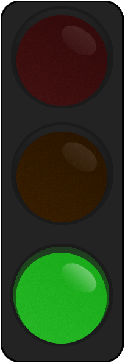PLOT:
Natsume has always been a quiet, standoffish kid, in part because he has always been able to see yokai (demons). Unfortunately, his abilities have tended to confuse his friends and alienate his guardians, so he has tended to be passed off from one relative to the next. One day he encounters Nyanko, a yokai that has been trapped in a ceramic cat so long that he tends to stay in that form. Nyanko tells Natsume about his grandmother Reiko, who has similar powers to Natsume. Nyanko also recognizes the old book of hers that Natsume keeps. This is the Book of Friends, where Reiko wrote down the names of yokai that she captured and enslaved. Now yokai from far and wide are flocking to Natsume so that he might free them, whether it be by request or by force. As he releases the yokai one by one, he learns more about them and about his grandmother's past.
STORY:
Natsume's Book of Friends is something of an odd duck in the world of shoujo. Instead of being about the schoolroom romance of a young girl, it's instead a quiet, episodic tale of a loner boy learning to reach out to others, both in the real world and in the supernatural world.
Natsume himself is an appropriately low-key lead for such as story. He tends to repress a lot and play things cool in order to not freak out his guardians (an unfortunate trend in his past) and to not attract attention from others for being weird. He mostly justs wants to coast through life without a lot of notice. Of course, that changes the moment that Nyanko-sensei (who insists on Natsume addressing him with the honorific) enters the picture to get the main conflict going. Nyanko is admittedly less of a character and more of a collection of quirks assembled in a terribly cute (and highly marketable) form. He spurs along the plot of the next chapter, he defends Natsume in his true form as needed, and the rest of the time is a source of snark and cute kitty antics. There is something of a character arc for Natsume, though, as we see him gradually open up and trust in others, and this arc is interwoven with the yokai-of-the-week stories.
The rest of the yokai don't get nearly the amount of screentime (pagetime?) that Nyanko gets, as they tend to follow the same pattern: they come to Natsume with a conflict, Natsume resolves the conflict, returns the yokai's name to its owner, and the yokai moves on. The forms of the yokai are heavily influenced by Shinto belief, so we see spirits that possess shadows or remote shrines, or those that are the dispossessed spirits of birds and other animals. Oddly enough, the character we learn the least about is Reiko. This is rather odd considering how often she's brought up, and you'd think that a lonely kid like Natsume would want to learn more about the ancestor that he so strongly resembles in looks and in powers. Maybe this is something that's explored more in later volumes, but all we know of her at this point was that she was lovely, spiritually powerful, casually cruel, and deeply lonely.
Natsume's Book of Friends is rather atypical for its genre, being very quiet, heavily spiritual in its outlook, and focused on a male lead without the slightest bit of romance. Still, it's those same qualities that make it stand out and make it so good in the first place.
ART:
Natsume's Book of Friends gets a lot of comparisons to Mushishi. Part of that comes from the somewhat similar subject matter and tone, but part of it also comes from the artwork. Natsume's art style is similar light and sketch-like. The human beings are rather simply designed, but the yokai are much more fantastical, ranging from Nyanko's dual forms (as a cute ceramic kitty and a fierce, furry monster) to masked humanoids to huge, one-eyed kimono-wearing ogres. Despite the difference in designs, there's a high degree of subtlety to their expressions, and some points are striking in their simple beauty. The best example is during the scenes where Natsume returns the names, literally breathing the penstrokes off the page towards their owners.
The panels are also rather sparse and loosely composed, as if the images are drifting gently through them. Backgrounds are rare and lightly drawn, augmented with just a touch of screen tone. The pages themselves are lightly composited, complementing the panels beautifully. There's just a general sense of airiness and simplicity to the artwork, which enhances the story's equally light, simple tone and is rather lovely in its own way.
PRESENTATION:
There are some chapter notes and a few brief translation notes in the back.
RATING:
 This is a gentle, episodic story with an equally gentle, loose, and occasionally beautiful artstyle. It's rather unique for modern-day shoujo and a series that I highly recommend.
This is a gentle, episodic story with an equally gentle, loose, and occasionally beautiful artstyle. It's rather unique for modern-day shoujo and a series that I highly recommend.This series is published by Viz. This series is ongoing in Japan, with 15 volumes currently available. 13 of those 15 volumes have been released, and all are currently in print.
You can purchase this volume and many more like it through RightStuf.com!

No comments:
Post a Comment